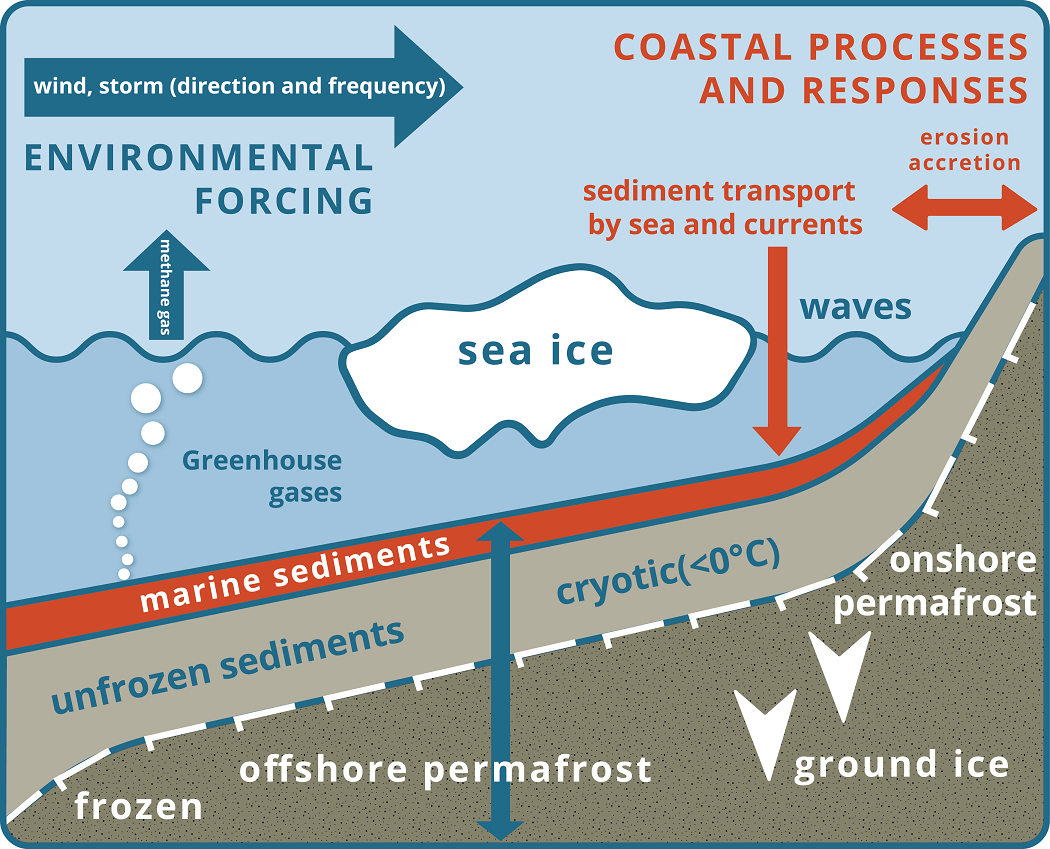The Arctic Coastal Dynamics has a new website, designed and hosted by the Arctic Portal team.

What is ACD?
The Arctic Coastal Dynamics (ACD) project started in 1999 as an initiative of the International Permafrost Association (IPA) and the International Arctic Science Committee (IASC). ACD quickly developed a vibrant international community of scientists carrying out research in the Arctic. Significant contributions to International Conferences on Arctic Research Planning (ICARPs), to the International Polar Year (IPY) and to Arctic Observing (SAON, AOS) were the result. The State of the Arctic Coast report in 2012 was the culmination of much of this work and demonstrated how the project seeks to integrate research across disciplines and stakeholder groups. The year 2015 marks the beginning of a new phase of activity, initiated by a group of young researchers and beginning with the meeting described below. We welcome the participation of new researchers and groups in the project.
Background information
Arctic continental shelves comprise 30% of the area of the Arctic Ocean and contribute about 20% of the world's continental shelf area. This extensive circum-Arctic coastal margin, about 200,000 km long, is the interface through which land-shelf exchanges are mediated. Sediment input to the Arctic shelf resulting from erosion of ice-rich, permafrost-dominated coastlines may be equal to or greater than input from river discharge. Determining sediment sources and transport rates along high latitude coasts and inner shelves is critical for interpreting the geological history of the shelves and for predictions of future behavior of these coasts in response to climatic and sea level changes.
Though generally only a few kilometers wide (except in the vicinity of large deltas), the coastal zone of the Arctic Ocean is the site of dramatic changes in not only the land and ocean but also in the cryosphere and biosphere. The Arctic coastlines are highly variable, can be stable or extremely dynamic and are the site of most of the human activity that occurs at high latitudes. Extraction of natural resources occurs in many locations around the Arctic Ocean creating the need for port facilities and the potential for pollution. These pressures are only likely to increase with time
Objectives and main content of ACD
The Arctic Coastal Dynamics (ACD) program is a multi-disciplinary, multi-national forum to exchange ideas and information. The overall objective of ACD is to improve our understanding of circum-Arctic coastal dynamics as a function of environmental forcing, coastal geology and cryology and morphodynamic behavior. Figure 1 schematically summarizes the relevant parameters and processes. In particular, the ACD program proposed to:
- <li">establish the rates and magnitudes of erosion and accumulation of Arctic coasts;
- develop a network of long-term monitoring sites including local community-based observational sites;
- identify and undertake focused research on critical processes;
- estimate the amount of sediments and organic carbon derived from coastal erosion;
- refine and apply an Arctic coastal classification (includes ground ice, permafrost, geology, etc.) in digital form (GIS format);
- compile, analyze and apply existing information on relevant environmental forcing parameters (e.g. wind speed, sea level, fetch, sea ice etc.);
- develop empirical models to assess the sensitivity of Arctic coasts to environmental variability and human impacts;
- produce a series of thematic and derived maps (e.g. coastal classification, ground-ice, sensitivity etc.);
